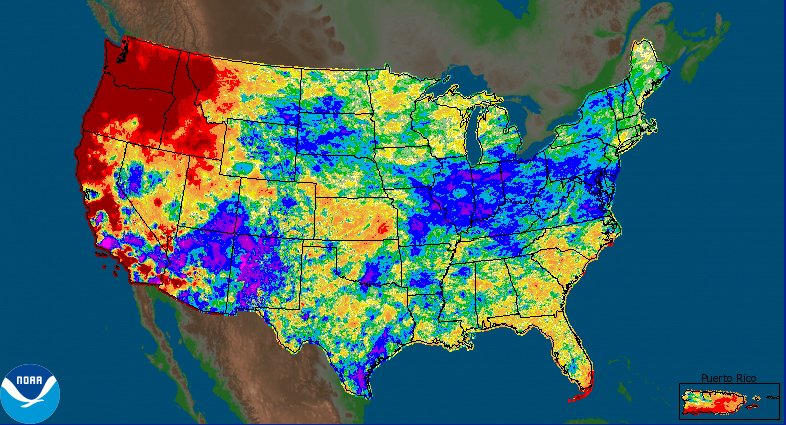Early summer typically marks the start of the dry season across much of the United States. But that’s far from the case across vast swaths of the country this year, a new map from the National Weather Service shows.

The map compares data collected over the past 30 days from local weather centers with local averages from the same days collected over the past 30 years. Purple and blue regions received at least 1.5 times the average rainfall in the last 30 days — and the map shows large parts of the Northeast and Southwest much wetter than average.
But other regions received very little rain, like drought-stricken California and Washington, which sweated through a heatwave in late June. Very few regions received an average level of rainfall.
Dan Petersen, a meteorologist at the National Weather Service, described the trend as “unusual.” “It’s just been striking—instead of just being part of a season, we’ve had multiple seasons of this trend,” he said.
More Must-Reads from TIME
- Cybersecurity Experts Are Sounding the Alarm on DOGE
- Meet the 2025 Women of the Year
- The Harsh Truth About Disability Inclusion
- Why Do More Young Adults Have Cancer?
- Colman Domingo Leads With Radical Love
- How to Get Better at Doing Things Alone
- Michelle Zauner Stares Down the Darkness
Write to Justin Worland at justin.worland@time.com